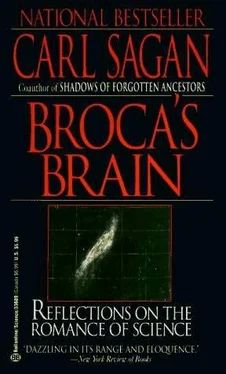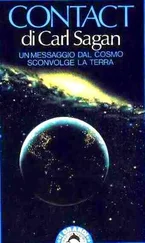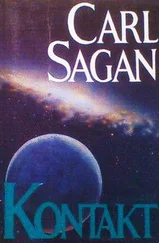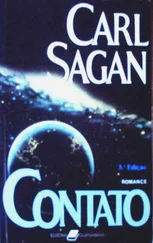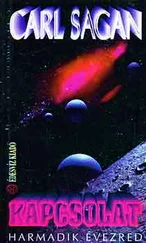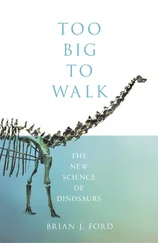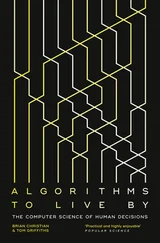Carl Sagan - Broca's Brain - The Romance of Science
Здесь есть возможность читать онлайн «Carl Sagan - Broca's Brain - The Romance of Science» весь текст электронной книги совершенно бесплатно (целиком полную версию без сокращений). В некоторых случаях можно слушать аудио, скачать через торрент в формате fb2 и присутствует краткое содержание. Жанр: Физика, на английском языке. Описание произведения, (предисловие) а так же отзывы посетителей доступны на портале библиотеки ЛибКат.
- Название:Broca's Brain: The Romance of Science
- Автор:
- Жанр:
- Год:неизвестен
- ISBN:нет данных
- Рейтинг книги:3 / 5. Голосов: 1
-
Избранное:Добавить в избранное
- Отзывы:
-
Ваша оценка:
- 60
- 1
- 2
- 3
- 4
- 5
Broca's Brain: The Romance of Science: краткое содержание, описание и аннотация
Предлагаем к чтению аннотацию, описание, краткое содержание или предисловие (зависит от того, что написал сам автор книги «Broca's Brain: The Romance of Science»). Если вы не нашли необходимую информацию о книге — напишите в комментариях, мы постараемся отыскать её.
Broca's Brain: The Romance of Science — читать онлайн бесплатно полную книгу (весь текст) целиком
Ниже представлен текст книги, разбитый по страницам. Система сохранения места последней прочитанной страницы, позволяет с удобством читать онлайн бесплатно книгу «Broca's Brain: The Romance of Science», без необходимости каждый раз заново искать на чём Вы остановились. Поставьте закладку, и сможете в любой момент перейти на страницу, на которой закончили чтение.
Интервал:
Закладка:
Despite Hevelius’ misgivings, the lunar craters were named after scientists and philosophers by Giovanni Battista Riccioli in a 1651 publication, Almagestum Novum. The title of the book means “The New Almagest,” the old Almagest having been the life’s work of Ptolemy. (“Almagest,” a modest title, means “The Greatest” in Arabic.) Riccioli simply published a map on which he placed his personal preferences for crater names, and the precedent and many of his choices have been followed without question ever since. Riccioli’s book came out nine years after the death of Galileo, and there has certainly been adequate opportunity to rename craters later. Nevertheless, astronomers have retained this embarrassingly ungenerous recognition of Galileo. Twice as large as crater Galileo is one called Hell after the Jesuit father Maximilian Hell.
One of the most striking of the lunar craters is Clavius, 142 miles in diameter and the site of a fictional lunar base in the movie 2001: A Space Odyssey. Clavius is the Latinized name of Christoffel Schlüssel (= “key” in German = Clavius), another member of the Jesuit order, and a supporter of Ptolemy. Galileo engaged in a protracted controversy on the priority of discovery and the nature of sunspots with yet another Jesuit priest, Christopher Scheiner, which developed into a bitter personal antagonism and which is thought by many historians of science to have contributed to the house arrest of Galileo, the proscription of his books, and his confession, extracted under threat of torture by the Inquisition, that his previous Copernican writings were heretical and that Earth did not move. Scheiner is commemorated by a lunar crater 70 miles across. And Hevelius, who objected altogether to the naming of lunar features after people, has a handsome crater named after himself.
Riccioli gave the names Tycho, Kepler and, interestingly, Copernicus to three of the most prominent craters on the Moon. Riccioli himself and his student Grimaldi received large craters at the limb, or edge, of the moon, Riccioli’s being 106 miles across. Another prominent crater is named Alphonsus after Alphonso X of Castile, a thirteenth-century Spanish monarch who had commented, after witnessing the complexity of the Ptolemaic system, that had he been present at the Creation, he could have given God some useful suggestions on ordering the universe. (It is amusing to imagine Alphonso X’s response were he to learn that seven hundred years later a nation across the Western ocean would send an engine called Ranger 9 to the Moon, automatically producing images of the lunar surface as it descended, until finally it crashed in a pre-existing depression named, after His Castilian Majesty, Alphonsus.) A somewhat less prominent crater is named after Fabricius, the Latinized name of David Goldschmidt, who in 1596 discovered that the star Mira varied periodically in brightness, striking another blow against the view championed by Aristotle and supported by the Church that the heavens were unchanging.
Thus the prejudice against Galileo in seventeenth-century Italy did not, in the naming of lunar features, carry over as a completely consistent bias in favor of Church fathers and Church doctrines on matters astronomical. Of the approximately seven thousand designated lunar formations it is difficult to extract any consistent pattern. There are craters named after political figures who had little direct or apparent connection with astronomy, such as Julius Caesar and Kaiser Wilhelm I, and after individuals of heroic obscurity: for example, crater Wurzelbaur (50 miles in diameter) and crater Billy (31 miles in diameter). Most of the designations of small lunar craters are derived from large and nearby craters, as, for example, near the crater Mösting are the smaller craters Mösting A, Mösting B, Mösting C, and so on. A wise prohibition against naming craters after living individuals has been breached only occasionally, as in assigning a few quite small craters to American astronauts of the Apollo lunar missions, and by a curious symmetry in the age of détente, to Soviet cosmonauts who remained behind in Earth orbit.
In this century an attempt has been made to name, consistently and coherently, surface features and other celestial objects by giving this function to special commissions of the International Astronomical Union (IAU), the organization of all professional astronomers on the planet Earth. A previously unnamed bay of one of the lunar “seas,” examined in detail by the American Ranger spacecraft, was officially designated Mare Cognitum (the Known Sea). It is a name not so much of quiet satisfaction as of jubilation. IAU deliberations have not always been easy. For example, when the first-somewhat indistinct-photographs of the far side of the Moon were returned by the historically important Luna 3 mission, the Soviet discoverers wished to name a long, bright marking on their photographs “The Soviet Mountains.” Since there is no major terrestrial mountain range of this name, the suggestion was in conflict with the Hevelius convention. It was accepted, nevertheless, in homage to the remarkable feat of Luna 3. Unfortunately, subsequent data suggest that the Soviet Mountains are not mountains at all.
In a related instance, Soviet delegates proposed naming one of the two maria on the lunar far side (both very small compared with those on the near side) Mare Moscoviense (the Sea of Moscow). But Western astronomers objected that this again departed from tradition because Moscow was neither a condition of nature nor a state of mind. It was pointed out in response that the most recent namings of lunar maria-those on the limbs, which are difficult to make out with ground-based telescopes-have not quite followed this convention either: as Mare Marginis (the Marginal Sea), Mare Orientale (the Eastern Sea) and Mare Smythii (the Smyth Sea). Perfect consistency having already been breached, the issue was decided in favor of the Soviet proposal. At an IAU meeting in Berkeley, California, in 1961, it was officially ruled by Audouin Dollfus of France that Moscow is a state of mind.
The advent of space exploration has now multiplied manyfold the problems of solar system nomenclature. An interesting example of the emerging trend can be found in the naming of features on Mars. Bright and dark surface markings on the Red Planet have been viewed, recorded and mapped from Earth for several centuries. While the nature of the markings was unknown there was an irresistible temptation to name them nevertheless. Following several abortive attempts to name them after astronomers who had studied Mars, G. V. Schiaparelli in Italy and E. M. Antoniadi, a Greek astronomer who worked in France, established around the turn of the twentieth century the convention of naming Martian features after allusions to classical mythological personages and place names. Thus we have Thoth-Nepenthes, Memnonia, Hesperia, Mare Boreum (the Northern Sea) and Mare Acidalium (the Sour Sea), as well as Utopia, Elysium, Atlantis, Lemuria, Eos (Dawn) and Uchronia (which, I suppose, can be translated as Good Times). In 1890, scholarly people were much more comfortable with classical myth than they are today.
THE KALEIDOSCOPIC surface of Mars was first revealed by American spacecraft of the Mariner series, but chiefly by Mariner 9, which orbited Mars for a full year, beginning in November 1971, and radioed back to Earth more than 7,200 close-up photographs of its surface. A profusion of unexpected and exotic detail was uncovered, including towering volcanic mountains, craters of the lunar sort but much more heavily eroded, and enigmatic, sinuous valleys which were probably caused by running water at previous epochs in the history of the planet. These new features cried out for names, and the IAU dutifully appointed a committee under the chairmanship of Gerard de Vaucouleurs of the University of Texas to propose a new Martian nomenclature. Through the efforts of several of us on the Martian nomenclature committee, a serious attempt was made to deprovincialize the new names. It was impossible to prevent major craters being named after astronomers who had studied Mars, but the range of occupations and nationalities could be significantly broadened. Thus there are Martian craters larger than 60 miles across named after the Chinese astronomers Li Fan and Liu Hsin; after biologists such as Alfred Russel Wallace, Wolf Vishniac, S. N. Vinogradsky, L. Spallanzani, F. Redi, Louis Pasteur, H. J. Muller, T. H. Huxley, J. B. S. Haldane and Charles Darwin; after a handful of geologists such as Louis Agassiz, Alfred Wegener, Charles Lyell, James Hutton and E. Suess; and even after a few science-fiction writers such as Edgar Rice Burroughs, H. G. Wells, Stanley Weinbaum and John W. Campbell, Jr. There are also two large craters on Mars named Schiaparelli and Antoniadi.
Читать дальшеИнтервал:
Закладка:
Похожие книги на «Broca's Brain: The Romance of Science»
Представляем Вашему вниманию похожие книги на «Broca's Brain: The Romance of Science» списком для выбора. Мы отобрали схожую по названию и смыслу литературу в надежде предоставить читателям больше вариантов отыскать новые, интересные, ещё непрочитанные произведения.
Обсуждение, отзывы о книге «Broca's Brain: The Romance of Science» и просто собственные мнения читателей. Оставьте ваши комментарии, напишите, что Вы думаете о произведении, его смысле или главных героях. Укажите что конкретно понравилось, а что нет, и почему Вы так считаете.
